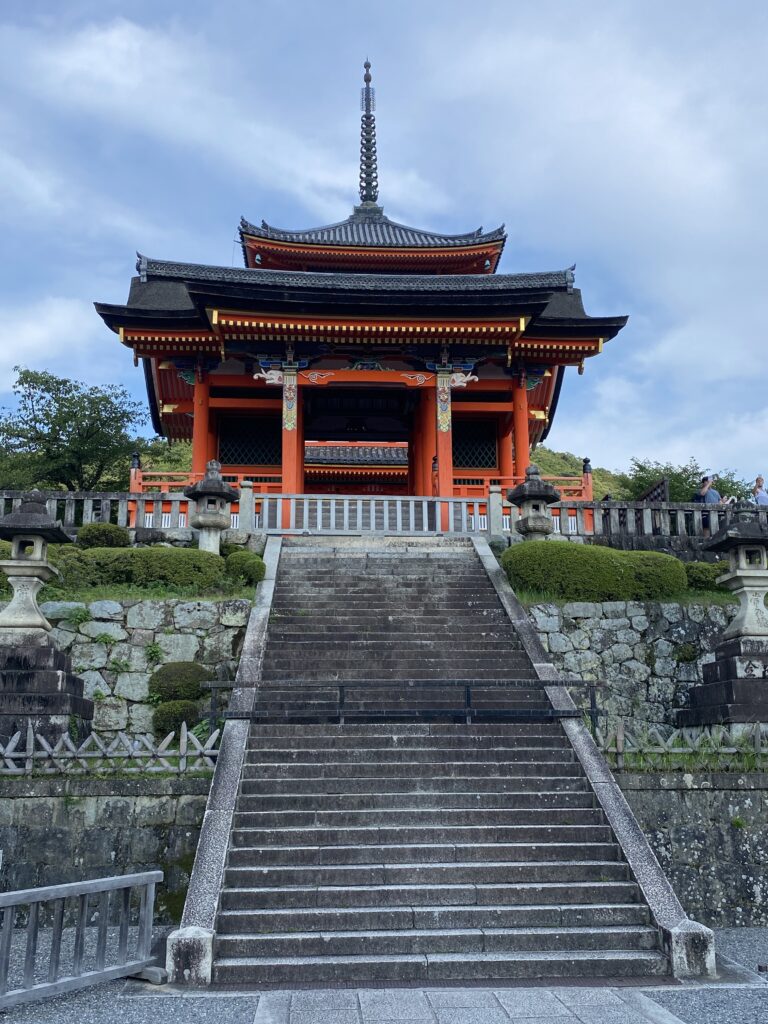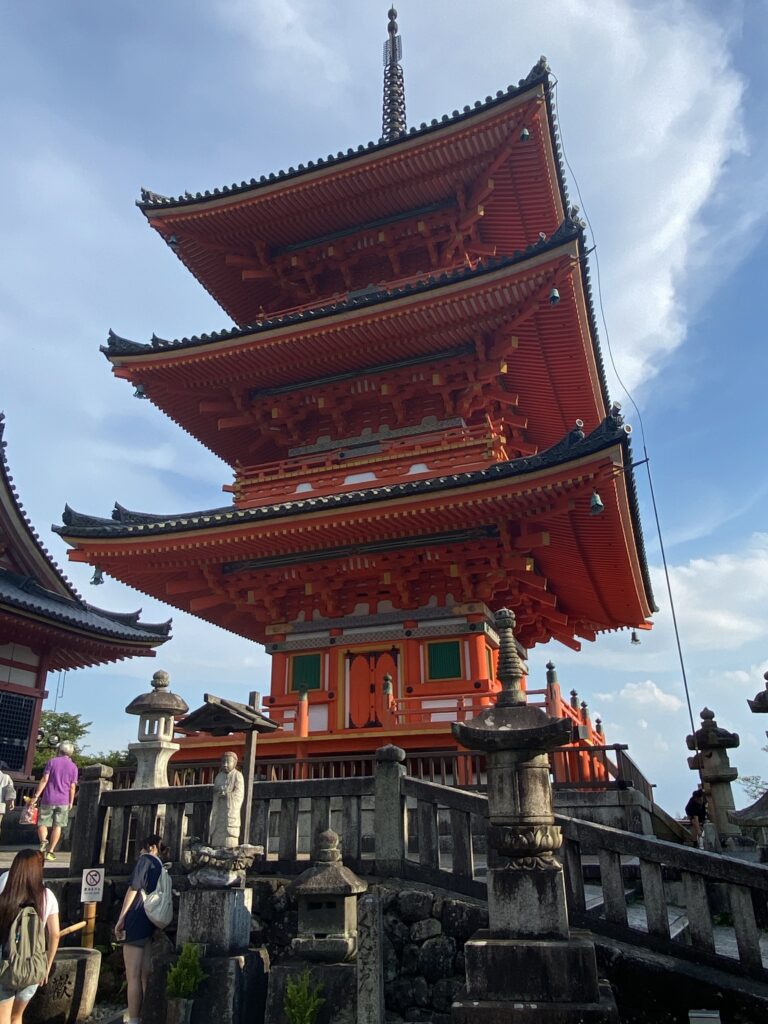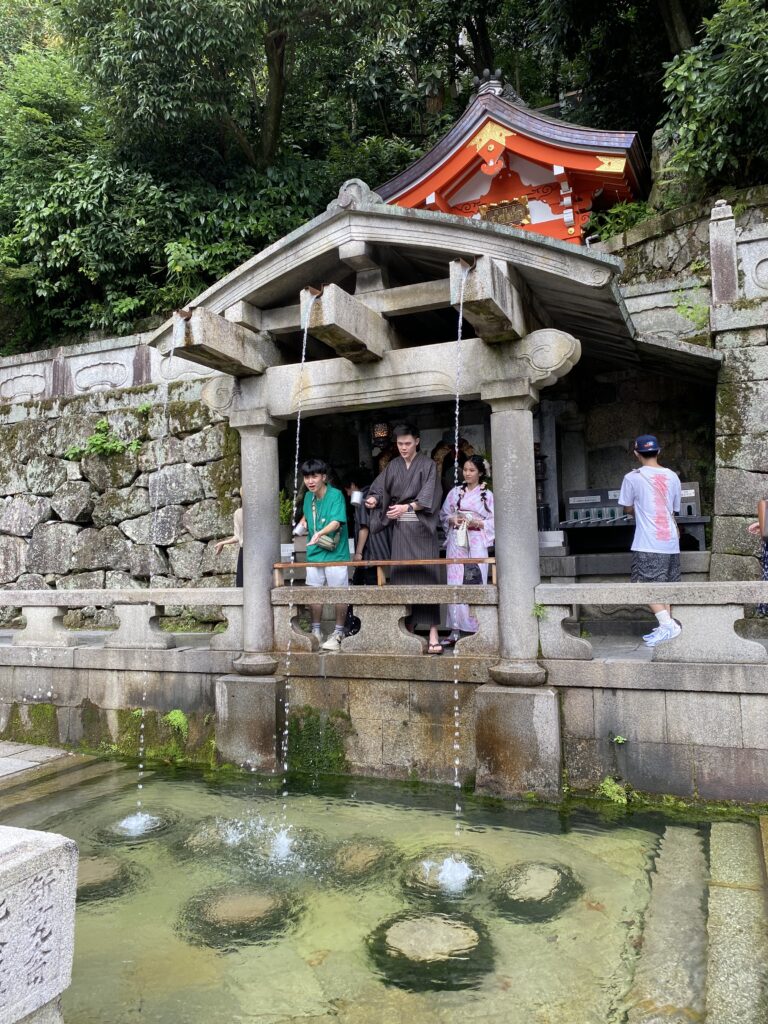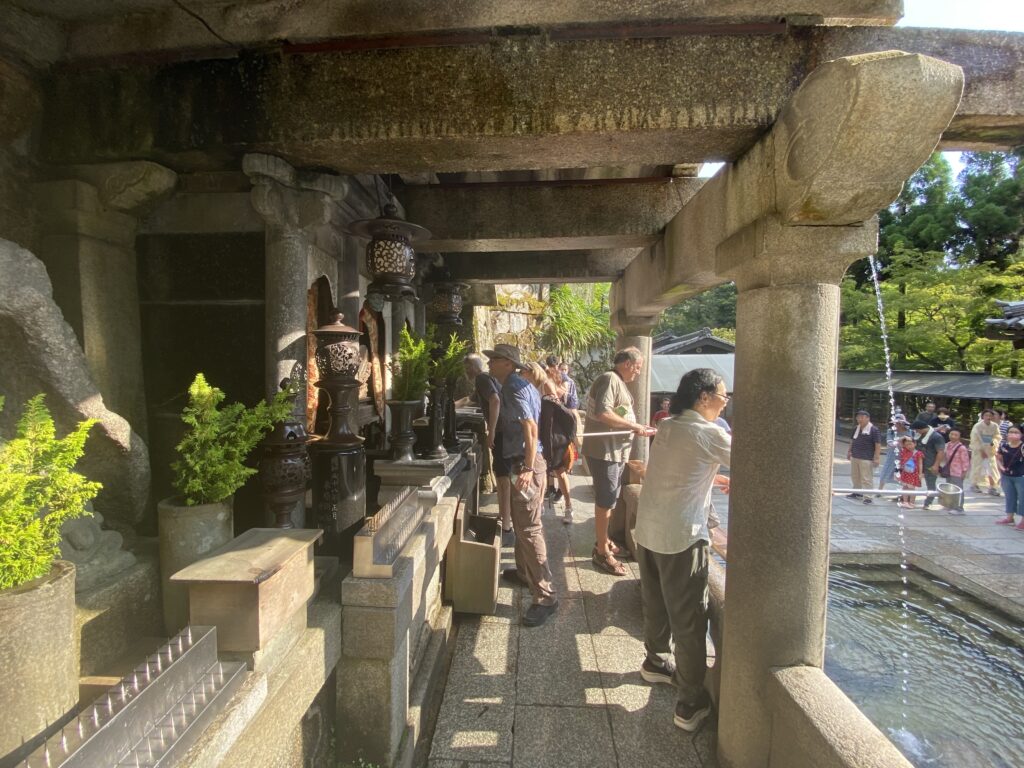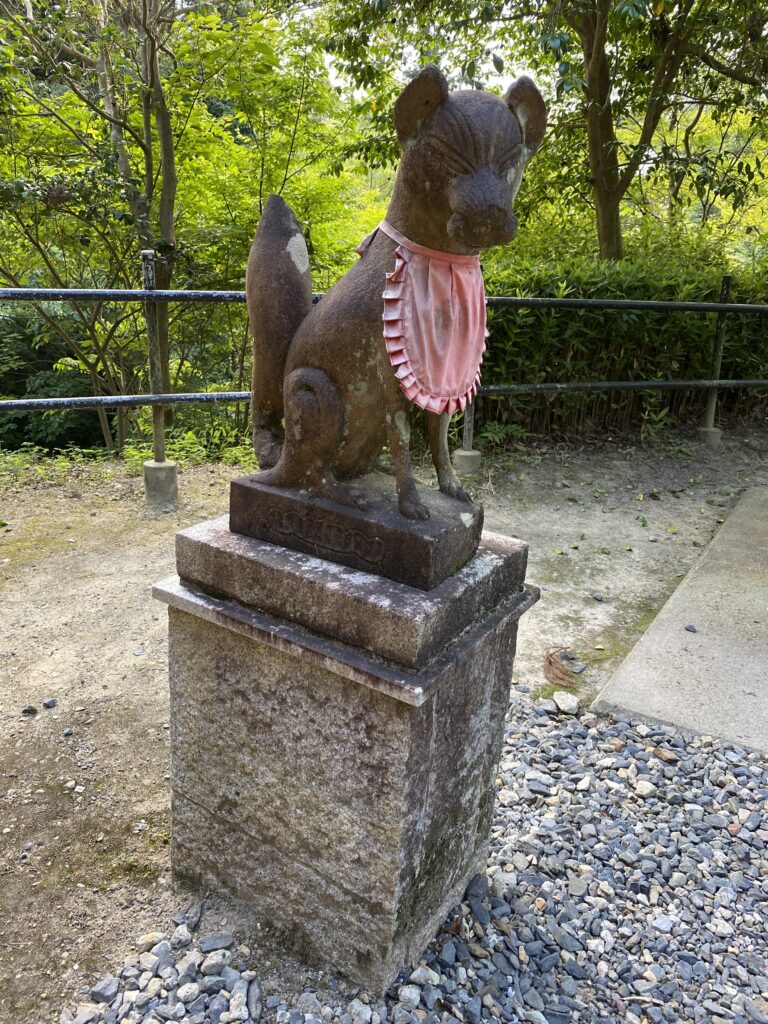By Yihad Ali Safi
Kiyumizudera, or Temple of Purifying Water, was founded in the late 700s by a priest from Nara. The present temple buildings were constructed in 1633 under Tokugawa Iemitsu. In 2007 the Temple complex was considered one of 21 finalists to be a possible “New Seven Wonders of the World”. Today it is affiliated with the Kitahossō sect.
The Temple takes its name from the waterfall located within its grounds. The term kiyumizu means clear water, or pure water and dera means temple. The main deity enshrined at the temple is Thousand-Arm Avalokitesvara (Kannon) known for having the ability to shapeshift, morphing for instance into the dragon Seiryu-e (guardian of the east) who flies to drink from the waterfall of the temple every night. The temple’s distinctive feature is the belief that its water represents the “manifestion body” (nirmanakaya) of Kannon, carrying the deity’s healing essence. As a result, many people wash, drink, and collect this water to attain some of its blessings and health benefits. This faith instills a deep connection for worshipers, who believe that contact with the sacred water links them to Kannon’s blessings and curative power.
Kiyumizudera offers various talismans, incense, and omikuji (paper fortunes) especially during festivals such as New Year’s and Obon where additional booths will provide holiday foodstuffs and souvenirs. Additionally, other health related activities that take place in and around the temple include raijio taiso (morning workouts) which are performed mostly by older people. In January, stamps of Gozutenmon (the Ox-Head Emperor) are displayed and used to protect against disease. Furthermore, there are special preparations conducted with the sacred water utilizing clove and borneol, to drink for ailments. Finally, there are ofuda offerings for the treatment of illnesses, and lectures where abbots speak on “Life and Death Studies”, thanatology, hospice, and nursing.
Media
VR Tour
Click here to view the accessible version of this interactive content
Scholarly Sources
- Butler, Lee. “Washing off the dust’: Baths and bathing in late medieval Japan.” Monumenta Nipponica, vol. 60, no. 1, 2005, pp. 1–41.
- Irons, Edward A. “Nirmanakaya.” Encyclopedia of Buddhism, edited by J. Gordon Melton, Facts on File, 2008, p. 369.
- Moerman, D. Max. “The Buddha and the bathwater: Defilement and enlightenment in the Onsenji engi.” Japanese Journal of Religious Studies, vol. 42, no. 1, 2015, pp.71.
- Williams, Duncan Ryuken. “Esoteric waters: Meritorious bathing, Kōbō Daishi, and legends of hot spring foundings.” Special issue (Matrices and Weavings: Expressions of Shingon Buddhism in Japanese Culture and Society), Bulletin of the Research Institute of Esoteric Buddhist Culture: 195-216.
External Links
- Schumacher, Mark. “Kannon Bodhisattva (Bosatsu) – Goddess of Mercy, One Who Hears Prayers of the World, Japanese Buddhism Art History.” Onmark Productions, www.onmarkproductions.com/html/kannon.shtml. Accessed 6 Oct. 2023.
- Schumacher, Mark. “Kuni-Nushi-No-Kami; Prince Ruddy Plenty, Japanese Shintoism Photo Dictionary Project.” Onmark Productions, www.onmarkproductions.com/html/O Kuni-Nushi-no-Kami.html. Accessed 6 Oct. 2023.
- Wikipedia contributors. “Ema (Shinto).” Wikipedia, The Free Encyclopedia. Wikipedia, The Free Encyclopedia, 10 Nov. 2023.

